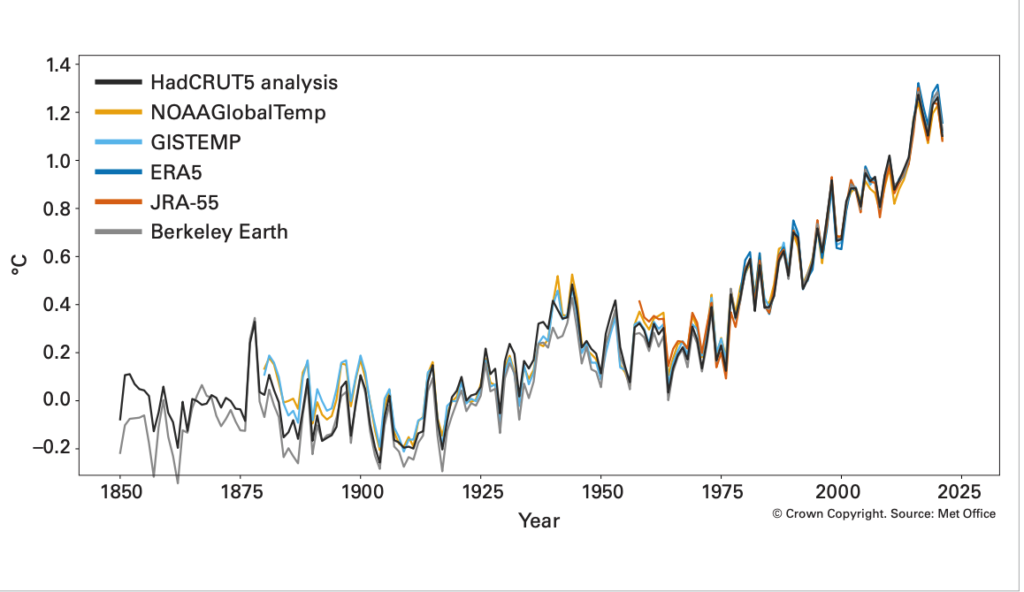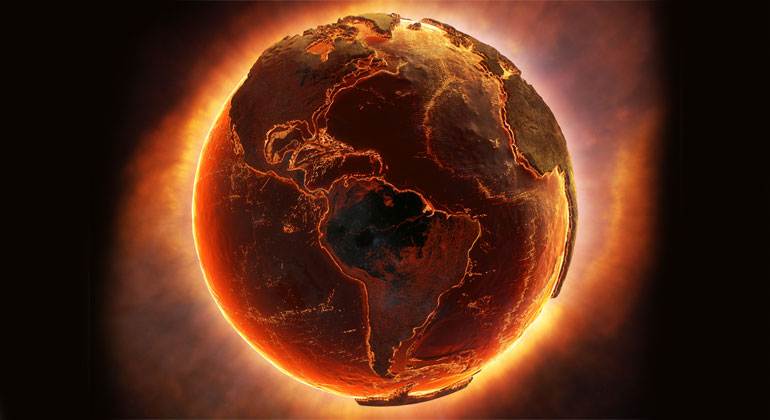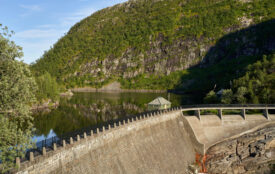Four key climate change indicators break records in 2021
Four key climate change indicators – greenhouse gas concentrations, sea level rise, ocean heat and ocean acidification – set new records in 2021.
This is yet another clear sign that human activities are causing planetary scale changes on land, in the ocean, and in the atmosphere, with harmful and long-lasting ramifications for sustainable development and ecosystems, according to the World Meteorological Organization (WMO).
Extreme weather – the day-to-day “face” of climate change – led to hundreds of billions of dollars in economic losses and wreaked a heavy toll on human lives and well-being and triggered shocks for food and water security and displacement that have accentuated in 2022.
The WMO State of the Global Climate in 2021 report confirmed that the past seven years have been the warmest seven years on record. 2021 was “only” one of the seven warmest because of a La Niña event at the start and end of the year. This had a temporary cooling effect but did not reverse the overall trend of rising temperatures. The average global temperature in 2021 was about 1.11 (± 0.13) °C above the pre-industrial level.
Criticizing “the dismal litany of humanity’s failure to tackle climate disruption,” United Nations Secretary-General António Guterres used the publication of the WMO flagship report to call for urgent action to grab the “low-hanging fruit” of transforming energy systems away from the “dead end” of fossil fuels to renewable energy.
In a video message, Mr Guterres proposed five critical actions to jump-start the renewable energy transition. They include greater access to renewable energy technology and supplies, a tripling of private and public investments in renewables and an end to subsidies on fossil fuels which amount to roughly $11 million per minute.
“Renewables are the only path to real energy security, stable power prices and sustainable employment opportunities. If we act together, the renewable energy transformation can be the peace project of the 21st century,” said Mr Guterres.
The world must act in this decade to prevent ever worsening climate impacts and to keep temperature increase to below 1.5°C above pre-industrial levels, he said.
“It is just a matter of time before we see another warmest year on record,” said WMO Secretary-General Prof. Petteri Taalas. “Our climate is changing before our eyes. The heat trapped by human-induced greenhouse gases will warm the planet for many generations to come. Sea level rise, ocean heat and acidification will continue for hundreds of years unless means to remove carbon from the atmosphere are invented. Some glaciers have reached the point of no return and this will have long-term repercussions in a world in which more than 2 billion people already experience water stress.”
“Extreme weather has the most immediate impact on our daily lives. Years of investment in disaster preparedness means that we are better at saving lives, though economic losses are soaring. But much more needs to be done, as we are seeing with the drought emergency unfolding in the Horn of Africa, the recent deadly flooding in South Africa and the extreme heat in India and Pakistan. Early Warning Systems are critically required for climate adaptation, and yet these are only available in less than half of WMO’s Members. We are committed to making early warnings reach everyone in the next five years, as requested by the United Nations Secretary-General Antonio Guterres,” said Prof. Taalas.
The WMO State of the Global Climate report complements the IPCC Sixth Assessment report, which includes data up to 2019. The new WMO report is accompanied by a story map and provides information and practical examples for policy-makers on how the climate change indicators outlined in the IPCC reports played out during the recent years globally and how the associated implications on extremes have been felt at national and regional level in 2021.
The WMO State of the Global Climate report, which will be used as an official document for the UN Climate Change negotiations known as COP27 to take place in Egypt later this year.
Dozens of experts contribute to the report from Member-States including National Meteorological and Hydrological Services (NMHSs) and Global Data and Analysis Centers, as well as Regional Climate Centres, the World Climate Research Programme (WCRP), the Global Atmosphere Watch (GAW), the Global Cryosphere Watch and the EU’s Copernicus Climate Change services.
United Nations partners include the Food and Agriculture Organization of the United Nations (FAO), Intergovernmental Oceanographic Commission of UNESCO (UNESCO-IOC), International Organization for Migration (IOM), the United Nations Environment Programme (UNEP), UN High Commissioner for Refugees (UNHCR), the UN Office for Disaster Risk Reduction (UNDRR) and the World Food Programme (WFP)









